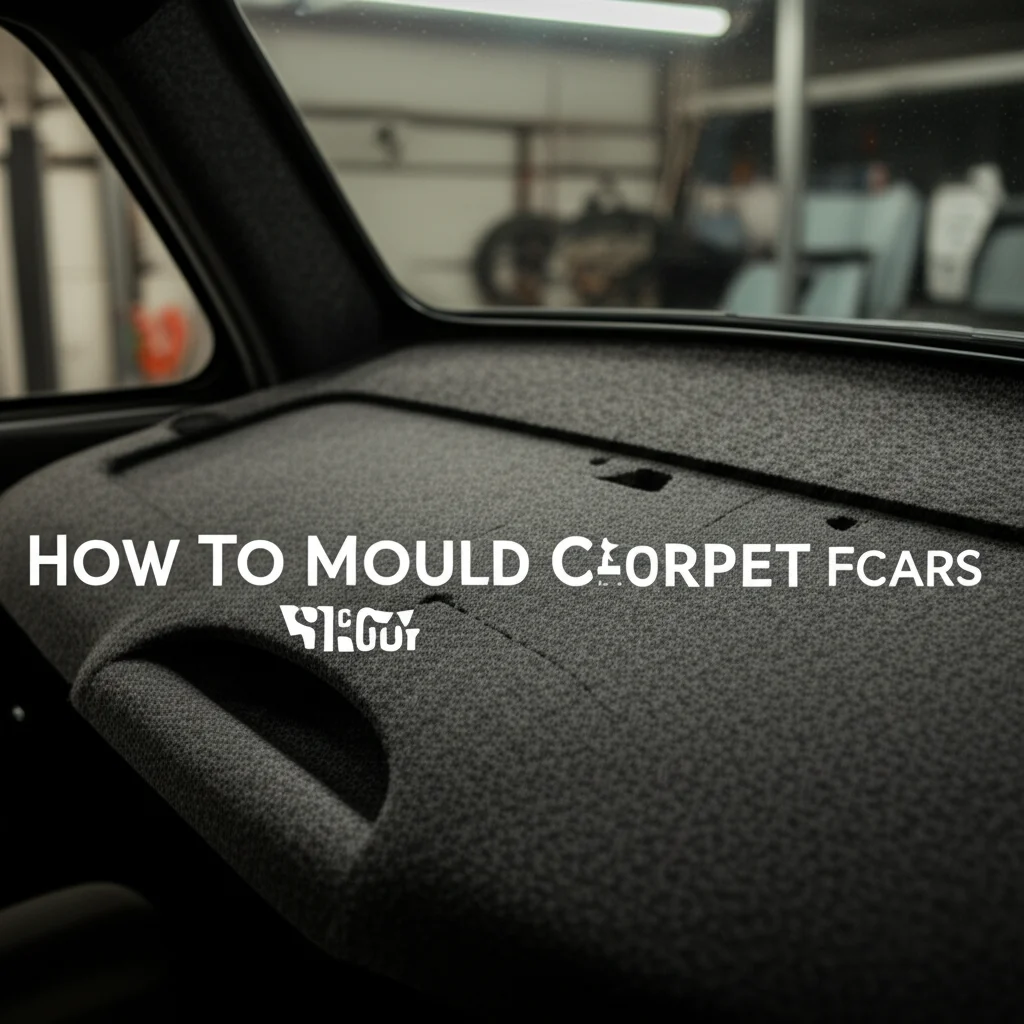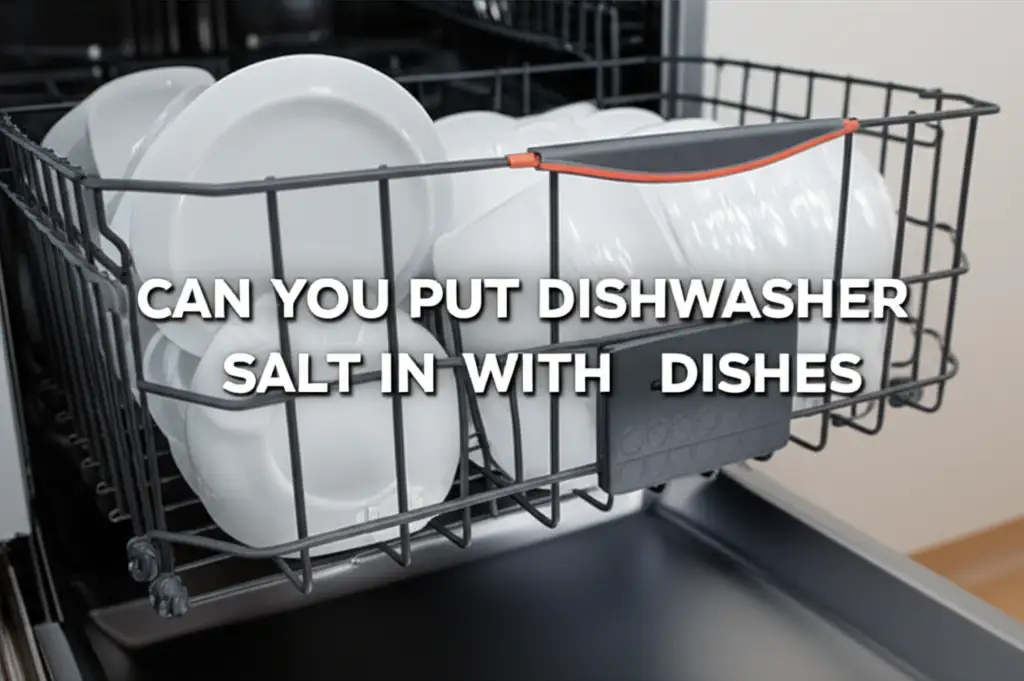· Katria Melrose · Automotive Interior · 18 min read
How To Mould Carpet For Cars

Moulding Car Carpet: A Step-by-Step Guide for a Perfect Fit
Dreaming of a fresh, clean, and perfectly fitted interior for your car? Old, worn-out carpet can make any vehicle feel less inviting. Learning how to mould carpet for cars allows you to replace unsightly flooring with a brand-new, factory-like finish. This process might seem complex, but it is achievable with the right approach and patience. I will walk you through everything you need to know.
This article provides a comprehensive guide. We will cover selecting materials, gathering essential tools, preparing your car’s floor, creating accurate templates, and using heat to shape the carpet. You will also learn about precise cutting and final installation steps. Get ready to give your car’s interior a significant upgrade.
Takeaway
Moulding car carpet for a perfect fit requires careful planning and execution. Key steps include:
- Choosing the correct carpet material.
- Thoroughly preparing the vehicle’s floor pan.
- Creating accurate templates from the old carpet or floor.
- Using controlled heat to shape new bulk carpet to the car’s contours.
- Precisely trimming and installing the carpet with strong adhesive.
Main Query Answer
Moulding car carpet involves creating a precise fit for your vehicle’s floor pans. This process uses heat, pressure, and templates to shape bulk carpet material. Careful preparation and accurate trimming ensure a professional, seamless finish, greatly enhancing your car’s interior aesthetics and sound dampening.
Understanding Car Carpet Materials and Types
Selecting the correct carpet material is a crucial first step when you mould carpet for cars. Not all carpets are the same. Car carpets are designed to handle specific conditions. They endure temperature changes, foot traffic, and potential spills. The material affects how well the carpet shapes and how long it lasts.
Common materials include nylon and polypropylene. Nylon offers good durability and stain resistance. Polypropylene is often more budget-friendly and resists mildew. Many factory carpets use a blend of materials. The carpet’s backing also plays a vital role. This backing provides structure and helps with adhesion.
Choosing the Right Carpet
When you choose carpet, consider its thickness and flexibility. Thicker carpets offer more sound insulation but can be harder to mould. Thinner carpets shape more easily. Look for carpet specifically designed for automotive use. It will have properties that allow it to stretch and conform with heat. You can buy pre-formed carpet kits, but these may not always fit perfectly. Using bulk carpet gives you full control over the moulding process. This control ensures a truly custom fit.
The Role of Backing Materials
Carpet backing is important for successful moulding. Most automotive carpets come with a dense rubber or jute backing. Rubber backing is good for sound deadening and moisture resistance. Jute backing is common in older vehicles. It is more permeable. The backing’s rigidity impacts how easily the carpet will bend and form under heat. A more flexible backing helps during the moulding process. A firm backing holds its shape better once moulded. Knowing what is car carpet made of helps you pick the best type for your project. The backing needs to be compatible with the adhesive you plan to use. This ensures the carpet stays down securely over time.
Essential Tools and Supplies for Carpet Moulding
Gathering your tools before you begin is a smart move. You need specific items to mould carpet for cars effectively. Having everything ready saves time and frustration. The right tools help you achieve a clean, professional result. This section lists the main items you will need.
You will require cutting tools for precise shapes. Heat application tools are central to the moulding process. Adhesives and safety gear are also important. Each tool serves a distinct purpose in shaping and installing your new car carpet. Prepare your workspace and ensure good ventilation. This makes the job safer and more efficient.
Shaping and Cutting Tools
Precision cutting is key for a perfect fit. Heavy-duty scissors can cut most carpet types. A sharp utility knife is also essential for intricate cuts around edges and obstacles. Always use a fresh blade for clean lines. A straight edge ruler or a long metal ruler helps when making long, straight cuts. You might also want a carpet trimmer tool. This tool ensures very clean, professional edges. For marking, use a permanent marker or tailor’s chalk. These marks transfer easily onto the carpet backing.
Adhesives and Sealing
Adhesive keeps your carpet securely in place. Look for high-temperature spray adhesive designed for automotive use. This type of adhesive withstands the temperature fluctuations inside a car. You may also need contact cement for edges or specific areas that need extra hold. Seam sealer can be useful if you have multiple carpet pieces. This helps create a smooth, continuous surface. A small roller or brayer helps press the carpet firmly into the adhesive. This removes air bubbles and ensures strong bonding. You need a strong bond to keep the carpet from shifting.
Safety Gear
Safety should always be a priority. When working with heat guns and sharp tools, protection is important. Wear heavy-duty gloves to protect your hands from heat and sharp edges. Safety glasses are a must to shield your eyes from any flying debris or adhesive spray. A respirator mask is also highly recommended when using spray adhesives. Good ventilation is important to disperse fumes. Work in a well-lit area. This helps you see clearly and avoid mistakes.
Preparing Your Car’s Interior for New Carpet
Before you can mould carpet for cars, you must prepare the car’s interior. This preparation step is as important as the moulding itself. A clean, smooth, and rust-free floor pan ensures your new carpet fits correctly and lasts longer. Skipping this step can lead to a less-than-perfect finish and potential issues down the road.
This process involves removing all old carpet and insulation. Then, you inspect the bare floor pan. You must clean it thoroughly. Any existing rust or damage needs repair. Finally, you can add sound deadening material. This creates a solid foundation for your new carpet.
Removing Old Carpet
Start by removing all seats from the car. Take out the center console and any trim pieces that cover the carpet edges. Carefully lift the old carpet. It may be glued in some areas. Use a scraper or putty knife to remove any stubborn adhesive residue. Be gentle to avoid damaging the floor pan. Pay attention to how the old carpet was laid. Note its contours and cut-outs. This information can be helpful later when you create templates. You want to remove all old material down to the bare metal.
Floor Pan Restoration
Once the old carpet is out, inspect the floor pan for rust, dents, or holes. Rust is a common issue in older vehicles. Treat any rust spots immediately. You can use a wire brush to remove loose rust. Then apply a rust converter or primer. For larger rust areas or holes, welding or patching may be necessary. This ensures structural integrity and prevents moisture from getting under your new carpet. Clean the entire floor pan with a degreaser. Make sure it is completely dry before moving on. A clean, smooth surface helps the new carpet adhere properly.
Sound Deadening Application
Applying sound deadening material is an excellent upgrade. It reduces road noise and vibrations. This creates a quieter and more comfortable ride. Many sound deadening mats are self-adhesive. Cut them to fit the floor pan. Press them down firmly to ensure good contact. Pay attention to areas with significant contours. This material also provides a smoother surface for your new carpet. It helps insulate against heat from the exhaust. Sound deadening improves the overall feel of your car’s interior. It also makes the moulding process easier by filling in some uneven spots.
Creating Templates for Accurate Carpet Moulding
Creating accurate templates is a critical stage when you mould carpet for cars. This step dictates how well your new carpet will fit. A precise template ensures every curve, cutout, and edge matches your car’s floor pan exactly. Rushing this part leads to wasted material and a poor finish.
You can use the old carpet as a template. However, it might be stretched or damaged. Making new templates from scratch ensures the best fit. Cardboard or heavy paper works well for this purpose. Take your time to trace every detail. Accuracy here saves you effort later.
Template Materials
Heavy-duty cardboard is an excellent material for making templates. It is rigid enough to hold its shape but flexible enough to conform to curves. Large rolls of contractor’s paper or art paper also work. You need a material that you can easily cut and mark. Ensure you have enough material to cover each section of your car’s floor. You will likely need separate templates for the front floor, rear floor, transmission tunnel, and any other unique areas. Overlapping pieces are better than short ones. This allows for adjustments.
Tracing and Transferring
Start by laying your chosen template material over the cleaned floor pan. Press it down into all the contours. Use a marker or pencil to trace the exact outline of the floor. Pay close attention to seat bolt holes, console mounts, and any other obstacles. Cut out the template carefully. Test fit it in the car. Trim as needed until it fits perfectly against the floor pan. Do not rush this step. Once satisfied with the template, lay it over your new carpet material. Trace the outline onto the carpet’s backing. Remember to mark any cutouts for bolts or brackets. You may want to add a slight overlap (about 1-2 inches) around the edges. This allows for trimming during the final installation.
Accounting for Overlap and Edges
When tracing your templates onto the new carpet, consider the edges. You will need a little extra material to wrap around door sills or tuck under trim pieces. This overlap ensures a clean, finished look. Do not cut the carpet to the exact template size initially. Always cut it slightly larger. You can always trim excess material later. It is very hard to add material back. This extra material gives you room for error and adjustments during the moulding process. Think about how the carpet will meet other interior components. Plan for smooth transitions.
The Art of Heat Moulding Car Carpet
This is where you truly mould carpet for cars. Heat moulding is the process of using controlled heat to make the carpet pliable. This allows you to shape it precisely to your car’s floor contours. This technique is what gives a custom carpet job its professional look. It requires patience and a good understanding of how heat affects carpet fibers.
Working with heat means taking precautions. Always use safety gear. A heat gun is the primary tool for this step. Do not use open flames. Apply heat gradually and evenly. The goal is to soften the carpet, not to burn it.
Controlled Heating Techniques
Use a heat gun on a low to medium setting. Hold the gun a few inches away from the carpet. Move it in slow, even passes. Focus on one small section at a time. You will see the carpet fibers become more flexible. Do not hold the heat gun in one spot for too long. This can melt the fibers or the backing. Work from the center of the piece outwards. Apply heat to areas that need to bend sharply. For example, the transmission tunnel or wheel wells need more heat and careful shaping. Test the carpet’s pliability by gently pressing it. It should feel soft and willing to conform.
Pressing and Shaping
As the carpet softens, immediately press it into the desired shape. Use your hands, a roller, or even weights. Push the carpet into all the dips, curves, and ridges of the floor pan. You might need to reapply heat to stubborn spots. Work slowly, pushing out any air pockets. For deep contours, you may need to make small relief cuts on the carpet backing. These cuts allow the carpet to relax into the curve without bunching up. These cuts are only on the backing, not through the carpet pile. The heat helps the carpet ‘remember’ its new shape once it cools. This is the essence of why we mould carpet for cars.
Dealing with Complex Curves
Complex curves, like those around wheel arches or the drive shaft tunnel, require extra attention. For these areas, start by heating the general area. Then, focus on working the carpet into the curve bit by bit. You might need to stretch the carpet slightly. Car carpet material has some stretch, which is helpful here. For very tight spots, you may need to make darts or small pleats on the underside. These hide easily under the pile. Practice on a scrap piece of carpet first if you are unsure. This helps you get a feel for how the carpet reacts to heat and pressure. The goal is a smooth, wrinkle-free surface that perfectly mirrors the car’s floor.
Cutting and Trimming Your Moulded Carpet
Once you have successfully heat moulded your carpet, the next step is precise cutting and trimming. This stage refines the edges and creates openings for components. Accurate trimming ensures a professional appearance. It also allows your carpet to sit flush against the car’s interior panels. Mistakes here are hard to fix, so take your time and measure twice.
The goal is to remove excess material while maintaining the moulded shape. This involves working around door sills, seat mounts, and pedal openings. A sharp blade is your best friend in this process. You want clean, crisp edges.
Precision Trimming Tools
A sharp utility knife with a fresh blade is indispensable for trimming. You might also find a carpet trimmer useful for very straight edges along door sills. Curved scissors or tin snips can help with rounded corners or tight areas. When cutting, always cut from the backing side of the carpet. This gives you a clear view of your template lines and prevents cutting into the carpet pile unnecessarily. Use a straight edge or a flexible ruler as a guide for long cuts. You can also use chalk or a fabric marker to mark your cutting lines on the backing.
Finishing Edges
After the main shape is cut, focus on the edges. You want a clean, finished edge everywhere the carpet meets another surface. This includes door sills, under dashboards, and around seat mounts. For door sills, you will typically trim the carpet to just fit under the sill plate. This creates a neat, concealed edge. For areas around the console or under the dash, trim the carpet so it tucks neatly. You may need to make relief cuts on the backing in curved areas to help the carpet lie flat. These cuts prevent bulges. Some professional jobs involve binding the carpet edges. This prevents fraying. This is an optional step that adds to durability.
Creating Openings for Controls
You need to create openings for things like seat bolts, seat belt anchors, and shifter mechanisms. Mark these locations precisely on the carpet backing. Use a sharp utility knife or a drill with a hole saw for circular openings. For seat belt holes, you might need to cut a small “X” shape. This allows the anchor to pass through. Always cut slightly smaller than needed first. Then, you can enlarge the opening if necessary. It is easier to make a hole bigger than to make it smaller. Test fit the carpet frequently as you cut. This ensures all components align correctly. This attention to detail defines a well-moulded car carpet.
Installing and Securing Your Custom Car Carpet
After moulding and trimming, the final step is to install and secure your new car carpet. This involves applying adhesive and carefully laying the carpet into the vehicle. A proper installation ensures the carpet stays in place, looks smooth, and performs well for years. This is the rewarding stage where your hard work pays off.
You want to achieve a wrinkle-free and secure fit. This requires working systematically and applying even pressure. Pay attention to how the carpet sits in every contour. Your careful preparation and moulding will make this step much easier.
Adhesive Application
Use a high-temperature spray adhesive designed for automotive use. These adhesives withstand the heat inside a car. Apply a thin, even coat to both the car’s floor pan and the back of the carpet. Read the adhesive instructions for specific drying times. Some require a “tack” time before joining surfaces. Work in small sections, especially on large pieces of carpet. This prevents the adhesive from drying before you can position the carpet. Ensure complete coverage for a strong bond. Avoid overspray on areas where carpet will not be present.
Laying the Carpet Smoothly
Carefully position the moulded carpet piece onto the adhesive-coated floor pan. Start from one end, usually the front or center, and gradually lay the carpet down. Use your hands or a soft roller to press the carpet firmly into place. Work from the center outwards to push out any air bubbles or wrinkles. This ensures full contact with the adhesive. Pay special attention to the moulded contours. Press the carpet firmly into all the dips and curves. If you work in sections, ensure each section is smooth before moving to the next. This step takes patience to get a perfectly flat and smooth finish.
Securing and Finishing
Once the carpet is laid, press down firmly around all edges and cutouts. Ensure the adhesive has fully bonded. You may need to use a small roller or even your hands to apply pressure in tight spots. Reinstall any trim pieces, seat bolts, and console components. The trim pieces often help hold the carpet edges down. Ensure all bolts are tightened correctly. Check for any areas where the carpet might lift or shift. If you want to know how to keep a carpet down, proper adhesive application and trim piece reinstallation are key. Consider adding rubber floor mats to protect your new carpet. These mats can add an extra layer of defense against wear and tear. This final check ensures your new, custom-moulded car carpet is secure and ready for use.
Frequently Asked Questions
Can I mould car carpet without a heat gun?
Moulding car carpet without a heat gun is difficult. Heat softens the carpet fibers and backing. This allows the material to conform to complex shapes. Without heat, the carpet will be stiff and resist bending. You might get a rough fit, but achieving a smooth, wrinkle-free, custom shape is nearly impossible. A heat gun is an essential tool for this project.
What kind of adhesive should I use for car carpet?
Use a high-temperature spray adhesive designed for automotive applications. These adhesives are formulated to withstand the wide temperature fluctuations inside a car. Regular craft or household adhesives may fail in hot conditions. Look for products specifically labeled for carpet or automotive upholstery. They provide a strong, lasting bond to keep your carpet securely in place.
How long does it take to mould car carpet?
The time it takes to mould car carpet varies. It depends on the size of the car and your experience level. Preparing the interior can take several hours. Creating templates can take 2-4 hours per section. The actual heat moulding and trimming might take 4-8 hours for an entire car. Plan for at least one full weekend, or even two. Rushing the process often leads to mistakes.
Can I mould carpet for any car model?
Yes, you can mould carpet for virtually any car model. The process involves creating custom templates from your specific vehicle’s floor pan. This means the method adapts to different car makes and models. The key is careful template creation and precise heat moulding. Whether it is an antique or a modern vehicle, the principles remain the same.
How do I deal with carpet around seats or consoles?
When you mould carpet for cars, you handle areas around seats and consoles by creating precise cutouts. Make sure to mark the exact locations of seat bolt holes and console mounting points on your template. Cut these openings carefully after the carpet is moulded. Test fit frequently to ensure alignment. Trim any excess carpet so it tucks neatly under the seat rails or console edges.
How do I maintain my new moulded car carpet?
Maintaining your new moulded car carpet is simple. Regular vacuuming helps remove dirt and debris. For spills, blot them immediately with a clean cloth. Use a car carpet cleaner for stains. You can learn how to clean car carpet for best results. Consider using floor mats to protect high-traffic areas. Avoid harsh chemicals that could damage the carpet fibers or backing. Regular care keeps your car’s interior looking fresh.
Conclusion
You now have a clear understanding of how to mould carpet for cars. This project can transform your vehicle’s interior. You have learned about selecting the right materials, gathering the necessary tools, and preparing your car’s floor pan. We covered the crucial steps of creating accurate templates and using heat to shape the carpet. You also know how to trim and install your custom carpet for a flawless finish.
By following these steps, you can achieve a professional-looking result. Your car will feel renewed with its perfectly fitted, fresh carpet. This DIY project enhances your car’s appearance and comfort. Take your time, be patient, and enjoy the process. Are you ready to give your car the interior upgrade it deserves? Grab your tools and start moulding that carpet for cars today! Share your results and enjoy your refreshed ride.





